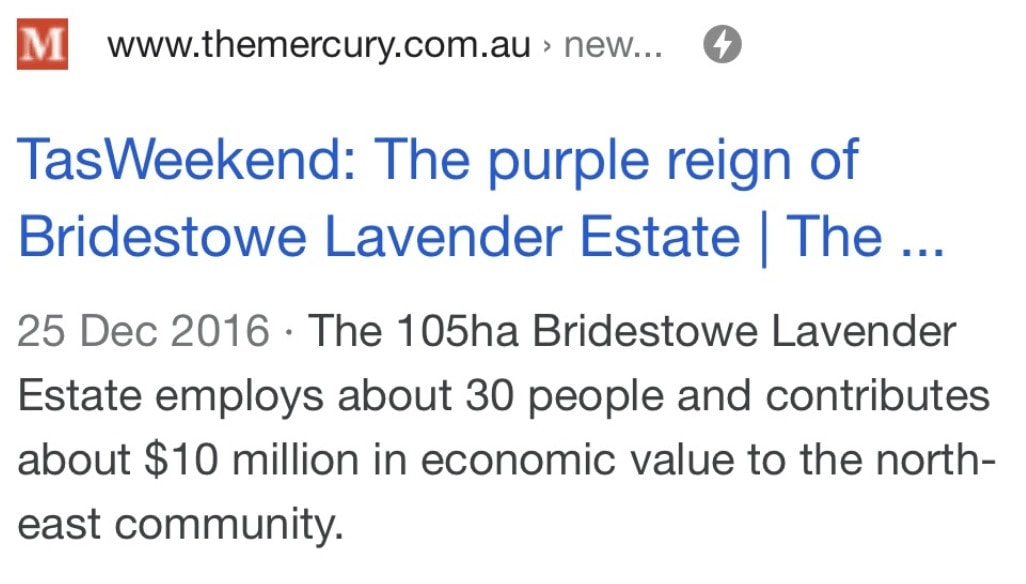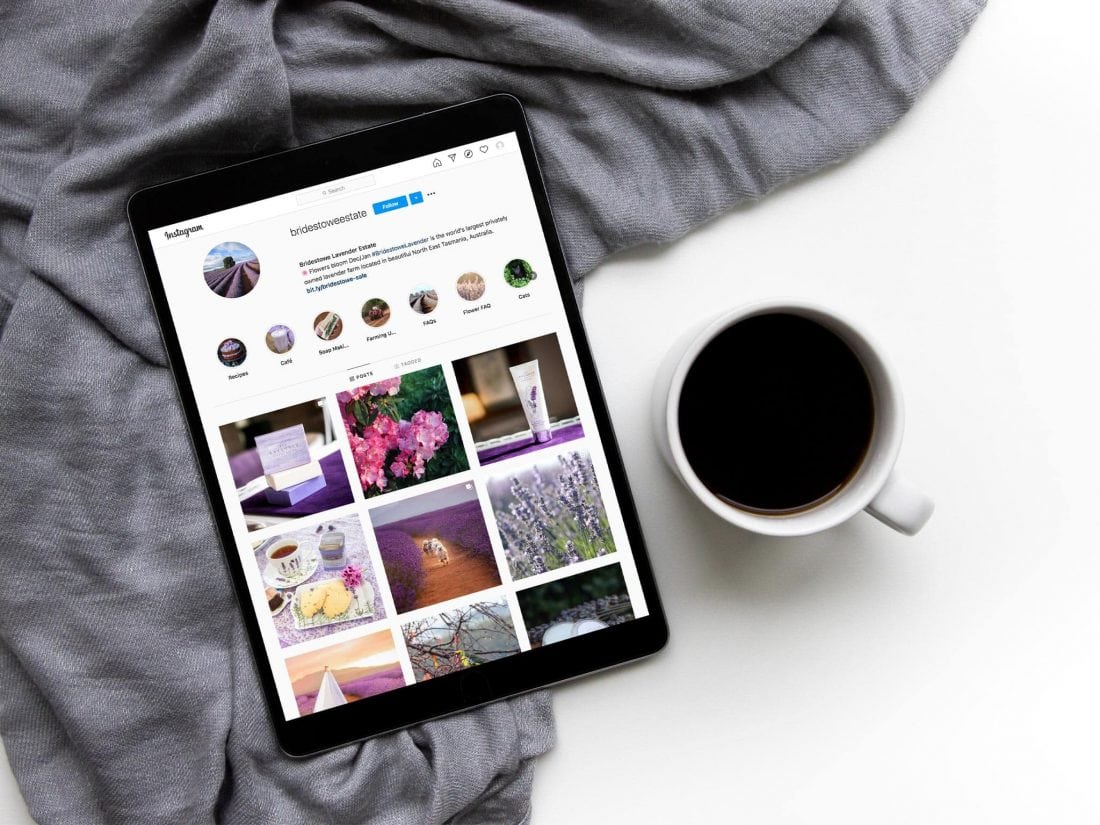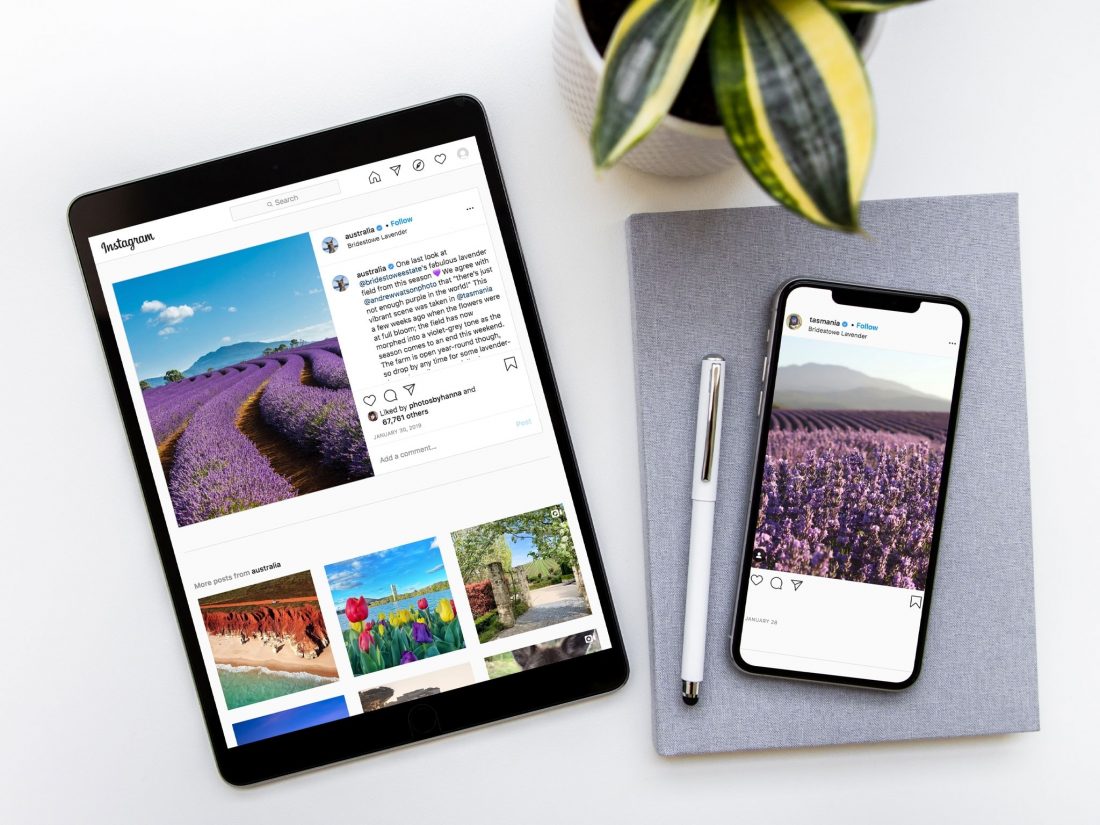Can social media really help you grow your tourism business and your local region?
Creating a measurable economic and social impact with social media and digital marketing. Is it really possible? Or is it a pipe dream sold by digital marketers who have a "Secrets of Digital Marketing" course to sell you for $47?
We're going to look at some lessons from Bridestowe Lavender Estate in Northern Tasmania.
You may have heard of this remote regional agri-business who created a purple lavender bear, Bobbie, that became an overnight sensation in mainland China back in the early-mid 2010s.
As the "Bobbie phenomenon" wore off, Bridestowe realised they had to diversify their product both online and offline. They embraced the opportunity that digital marketing and social media presented and the results have been spectacular.
They've experienced an impressive 20%+ year on year growth in visitation from the 2016/17 season through to 2019/20. Sales of their products online grew steadily over that same period, with some notable peaks, like a record-breaking online winter sale in June 2020—right in the middle of Tasmania's pandemic lockdowns.
And while these are fantastic results for their business, the most rewarding outcome is the estimated $10m of economic value that has supported their regional community.

What can we learn from Bridestowe's success?
In 2015, Bridestowe embarked on a project with WOOF Media to rebuild their then-underperforming e-commerce website. This began a journey and a fruitful partnership saw almost every aspect of their digital marketing rebuilt to support their growth as an iconic tourism business.
Let's break down eight important lessons from their journey that are relevant for every regional tourism business.

1) Invest in your digital foundations
Just like wealth creation, success with digital requires a long term commitment. Digital marketing is not a roll of the dice in the hopes of overnight viral success (just like winning the lottery—sometimes you get lucky, but 99.9% of the time success comes from hard work).
In 2015 Bridestowe committed to rebuild their digital platform from the ground up, starting with their website. Then, they made the most important decision: they invested in the people, partners and tactics to grow their social media and digital presence over the long term.
Key Lessons and Actions:
- Question the diversity of your product and marketing strategy. A short term product success (Bobbie the lavender bear in Bridestowe's case) will not sustain you for the long term.
- Get the foundations right. Are your digital platforms capable of supporting your product development and long term business goals?
- Invest what is necessary, over the long term. This applies not just to dollars. Digital success requires time and resources as well.
2) Know your customers
With an on-farm experience including a cafe and gift store, as well as their online store, Bridestowe have several different customer groups. From Tasmanian locals who are bringing visiting friends and relatives, to lavender-loving city dwellers across the globe.
"What you may not be aware of is that the tangible experience only represents 50% of your customers' experience with your brand, with the remaining 50% being the emotional experience they have." Paige Rowett, Tourism eSchool
It's key to understand your customer, their motivations and where your product and experience fits in their journey. Short of spending a small fortune on professional market research, social media is one of the most powerful research tools at your disposal—if you are willing to invest the time.
Key Lessons and Actions:
- Spend time creating your ideal customer persona(s) and understand the journey that they take before, during and after they engage with your product.
- Spend time talking with your customers on social media. Have real conversations. Comment and reply in order to understand your customer, not just to get a like and a share.

3) Develop in-house marketing capabilities
As a remote regional business (also, in an island state!), Bridestowe's challenge of finding and retaining great staff is one many regional tourism businesses will relate to. This is particularly challenging when looking for skills in the fast-moving world of social media and digital marketing.
Bridestowe integrated an in-house marketing and communications manager who was able to "go deep" with social media and traditional marketing as well as build relationships within and outside the business.
Key Lessons and Actions:
- Identify and create opportunities for those in your team who have the interest and the ability to contribute to your digital marketing success.
- Designate time specifically for social media and emphasise the importance of the work to your entire team. Even a light level of input from other team members will go a long way in facilitating the production of credible, insightful and creative content.
- Be realistic with your expectations – people generally have strengths in a few key aspects of marketing, but not "all the things". Focus on their skills, and look for ways to fill the gaps (see #8).
4) Encourage your local influencers and local visitors
Some of your best marketing advocates are living right next door, or just up the road. The visiting friends and family market is usually a strong one and with nearly 100 years of history in the region, many locals have personal or family connections to the Estate.
Bridestowe offers free entry to Tasmanian residents in appreciation of their ongoing support, and to remove any prohibitive costs that may prevent locals from connecting with a very special part of their State's history.
Another mutually beneficial relationship that has developed organically is with photographers. Photographers frequently request out of hours access to the property, which management will often facilitate for no extra charge in exchange for some photos, which are shared with credit to the photographer.
Key Lessons and Actions:
- Connect with local photographers via social media – it can be a very symbiotic relationship, with both parties saving on upfront costs and benefiting from exposure to each others' audiences.
- Create win-win opportunities for photographers and local influencers to promote your business and their region or profile organically.
- Identify opportunities to give preferential status and value-adds for locals. In these pandemic times, those businesses who have looked after locals in the past have enjoyed great support from locals in the tough times.
5) Embrace online customer service
Could a customer walk up to your front desk, ask a question and then be ignored for several hours? Imagine how those customers would feel? Worse, imagine what those customers then say about your service to their friends! This is literally the experience of many customers who reach out to businesses via their social media profiles, and it's often on public display for a very long time.
Being responsive online is a great opportunity for improved customer experience. And, it's just common sense customer service. With a little planning and some organising of your digital tools and profiles, your customers will thank you!
Key Lessons and Actions:
- Consider social media to be an extension of your customer service. Uphold the same professional standards that would apply if the person was standing in front of you.
- Audit your digital profiles and make sure the right people in your team can access them quickly and easily.
- Set a regular task in your calendar (and stick to it!) to review your social media profiles, opening hours, product information for accuracy. These are your online billboards – make sure they're correct!
- Use built-in auto reply tools to set expectations on response times (bonus points if you add additional sources of information to your auto replies – like links to FAQs on your website).
- If you're not actively monitoring certain social media profiles, make sure the bio and links are updated so customers know where you can be contacted easily.

Social media content assisted visitors in their dreaming and planning stages, which inspired high engagement and provided a positive customer service experience before the visit.
6) Find the diamonds in your data
Social media is one of the great listening tools available to any business. By "stalking" local location hashtags on Instagram for example, you can learn so much about what people actually enjoy and share about your region.
Along with active listening and engaging in social media conversations, Bridestowe were able to bring their own customer data into their online research and customer targeting.
For example, their on-site Wi-Fi was set to load a specific page on their website after visitors connected. Over time, this data provided a profile of their onsite visitors that was used to find similar audiences on social media and other digital advertising platforms.
Key Lessons and Actions:
- Document the questions that you're asked by customers, and turn these into FAQs for your website and social media content.
- Regularly review key insights from your website analytics and Google's Search Console. The latter is a gold mine for search terms where your website is appearing, giving you direct insights into what your potential visitors are searching for.
7) Collaborate with tourism organisation(s) at all levels
Tourism is an industry built on partnerships and collaboration. Regional, state and national tourism marketing organisations need a critical mass of great products to promote your region.
Investing in relationships with the product development and marketing teams in the tourism organisations that matter in your region will pay off in the long term. They'll understand your product better, and if you're consistently putting out high quality content you'll be more likely to attract opportunities to be featured in local and national campaigns.
One of the best ways you can attract this kind of support is to have a reliable presence, and great content on hand to share at a moment's notice. Spending on a media library might feel like a considerable and non-urgent investment, but by having high quality photos and video on file, Bridestowe has been able to supply quality material to both Tourism Australia and Tourism Tasmania at a moment's notice. This has generated unexpected but very valuable exposure in a number of locations, from bus stops in Hong Kong to international trade fairs across the globe.
And to build your own audiences, maintain a consistent, informative and high-quality social media presence. When opportunity knocks, you will be able to capture a fresh intake of interested viewers.
See these example features on Australia's Instagram and Discover Tasmania's Instagram.
Key Lessons and Actions:
- Develop relationships with your local tourism officers, regional tourism partners and your state tourism body – particularly the social media teams who are always looking for great content to feature on their profiles.
- Look for collaborative marketing opportunities with complementary tourism businesses. If you run a tour, consider packaging with local B&Bs. If you run accommodation, talk to your local tour and attraction operators about how you can work together to keep visitors in your region longer.

8) Partner with those who understand tourism and your business
Teamwork makes the dream work as they say. While Bridestowe invested in-house capabilities in social media and marketing (see #3), their staff could only take them so far.
Reaching the level of success they've enjoyed required specialised skills and knowledge that is beyond the reach of the average small, in-house marketing team.
Digital success requires a wide range of skills: strategy, design, photography, videography, copywriting, conversion optimisation, SEO, email marketing, analytics, digital advertising (PPC) on multiple platforms… along with industry knowledge and relationships!
In spite of popular belief, magical unicorn staff that possess all these skills only exist in fairy tales.
Bridestowe understood that the recipe for success meant doing what they're great at and then engaging professionals to fill the gaps.
Key Lessons and Actions:
- Develop an understanding of what is needed for your social media and digital success. Seek targeted professional advice from trusted partners – general advice is nice, but the strategy and tactics that work for Bridestowe or any other business may not work for yours.
- Conduct a marketing skills audit of those who are currently responsible for your marketing. Identify their areas of strength, and weaknesses to better inform yourself of how you can position your business and region for success in the future.
A final word, from James, General Manager of Bridestowe:
This article was first published on the Australian Regional Tourism Members Forum.
Share this on Social Media
Can We Help Your Tourism Business?
If you're serious about investing in the marketing partnership your tourism business needs, why not get in touch and we'll setup a call to discuss how we might be able to help you!


